
Riding a motorbike on your own in Ladakh as a female solo traveler
18 September 2018Motorbike rental shops are popping up like mushrooms everywhere in the Ladakh region, especially in Manali and Leh. It has become increasingly popular to ride bikes through these mountains and to adventure over some of the toughest roads in India. The majority of the bikers are still Indian tourists, but also foreigners are finding their way to those motorbike rental shops.
I was one of them, and decided to rent a bike in Manali. Below I give my best advice on how to survive India's trickiest roads in this region and still enjoy the ride!

Don't let anyone discourage you
People have a tendency to project their own fears onto you. Riding a motorbike on your own into Zanskar Valley is apparently one of those things that the locals think you should not do. Actually they don't understand why on earth you would do something like that for fun.
At first, everybody tried to talk me out of it, but as soon as I was riding, I got all the support in the world. People walking along the road with their herds were waving and smiling at me while shouting “julley!” In the local Ladakh language, julley means hello, goodbye, and thank you.
Some even flagged me down, just to shake my hand, ask me where I was from, and patted me on the back for my braveness to face Zanskar alone. I was even called “Hero”, “Strong woman” and “Very, very, very brave”. What they didn't know was that I was absolutely shitting myself with every river crossing and on the narrow rocky roads with their steep edges going down.
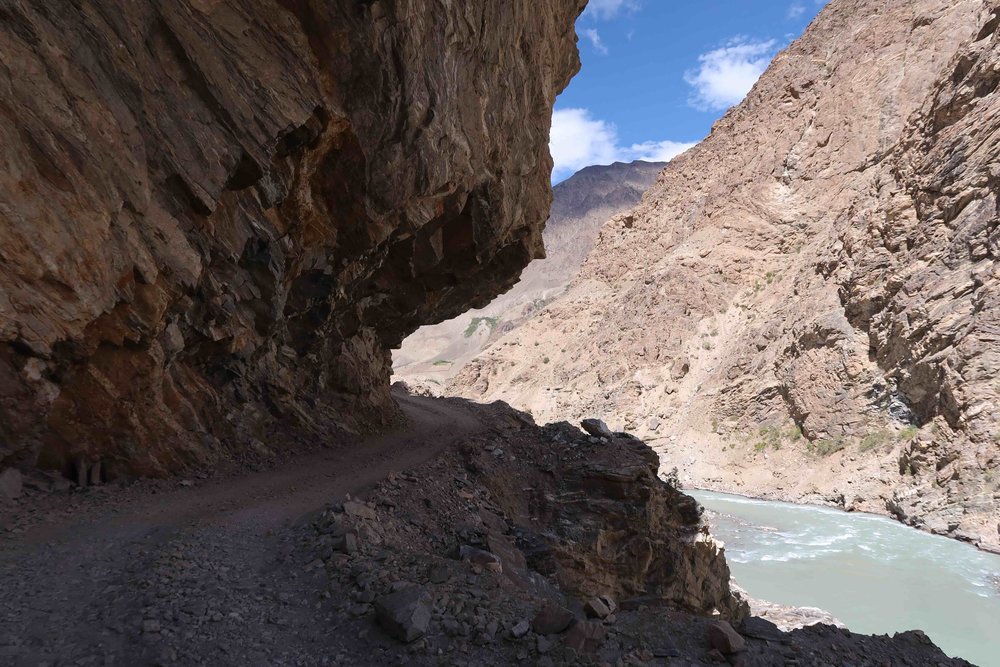
Essential gear
If you can, I would recommend bringing a proper motorbike jacket from home. But if you come fully unprepared like me, then don't worry. For 2000 rupees you buy a leather jacket in a place like Manali or Leh and off you go.
Because these jackets don't have any protection pads, and you'll be riding in your jeans, it is worth getting knee and elbow pads for your protection. They will set you down another 1200 rupees.
I also bought some leather boots, which cost me between 1500 and 2000 rupees, a pair of leather gloves costing 500 rupees, and to finish it off a piece of cloth for 100 rupees that would protect my nose and mouth from all the dust coming my way when on the road. I bought everything at the local bazaar for less than 6000 rupees or 75 euro.

Choose the right bike
Choosing a bike in India is easy. They'll only have Royal Enfield motorbikes on offer. KTM is an upcoming brand, but their 250cc motorbikes are hardly what you would call a motorbike. By far the most popular bike in India is the 500cc Royal Enfield Bullet.
The advantage of this bike is that every bike shop will have spare parts for it and mechanics know how to fix them. There are also many disadvantages. The bike is hard to steer, has hardly any ground clearance, has only a speed indicator, and it slurps fuel like a thirsty camel.
Moreover, it's a city bike and not meant for offroad adventures. That doesn't seem to stop most Indian motorbike travelers though, because about 90% of them ride on Bullets.
A better alternative is the 410cc Royal Enfield Himalayan. It's lighter, higher, and much more suitable for offroad riding. This bike comes with several weak points as well, although the 2018 model has improved a lot. When I left Manali on my Royal Enfield Himalayan rental bike, I noticed that there were major cracks in the swing arm of the bike. Within 100 kilometers or so, I would have probably lost my entire back wheel if I'd not noticed it. The bike shop repaired the issue, and I was on the road.
Rental prices for a Himalayan are about 1400 - 1500 rupees per day, including helmet, spare parts, and tools.
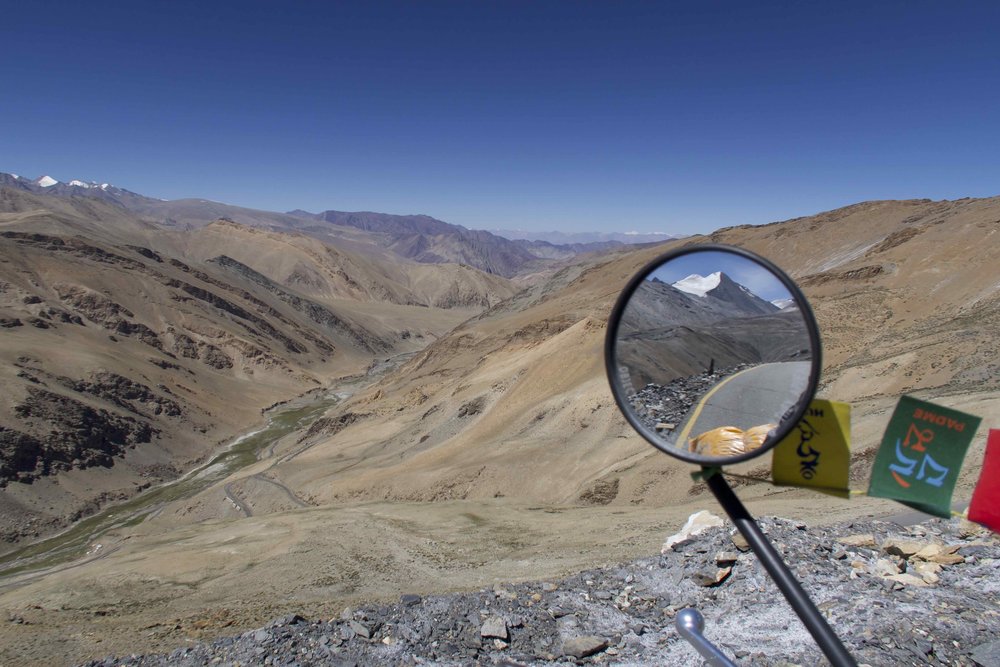
Road conditions
It's quite pointless to write about road conditions in this region as they are changing day-by-day. There are continuous road works going on, especially near the military bases, and there are continuous landslides, road blockages, and parts of the road that just have crumbled away.
I rode on roads with gravel, sand and rock surfaces, roads with only large boulders on them, wet roads, roads which were not even visible underneath the brown thundering river flowing over them, and beautifully black two-lane newly paved roads.
This is Ladakh. You will find all these types of roads when you get out there with your motorbike.
The scariest part of riding here was when I had to cross rivers. Especially when the water wasn't clear and you had absolutely no idea how deep it was and whether there would be big rocks hidden underneath the waterline.
When I left Manali, I was told that 20 kilometers after Serchu there would be a big glacier runoff river. They told me to make sure I would cross that point in the early morning when the runoff would be less. I decided to spend the night in Serchu and leave in the early morning, no problem. Only, I was misinformed. The river wasn't 20 kilometers after Serchu, but 20 kilometers before Serchu. So I reached the river crossing around 2pm, when the river was at full-blown proportions. I just looked at it for at least 10 minutes and pondered my options.
Like a mantra I was going over and over in my head, trust the bike - trust the bike - trust the bike. So I set off, full gas, no stopping, and somehow managed to plow through it without any incidents.
I did a little victory dance on my motorbike on the other side of the river, and pumped with adrenaline I sped off. I forgot to take pictures of the river crossing, but I managed to get a picture from other bikers who crossed it when the river was at a lower level.
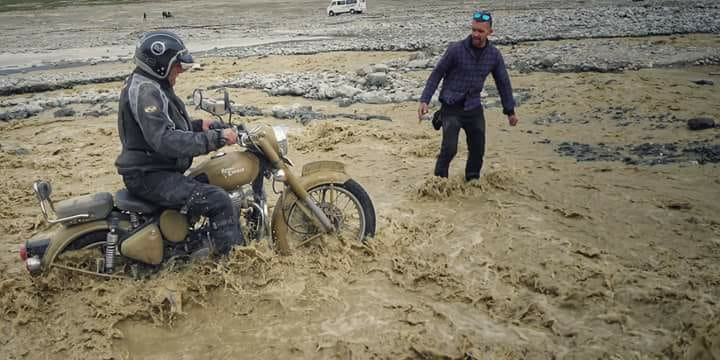
Fuel - Fuel - Fuel
Petrol stations are somewhat of a rarity in Ladakh, or better said they are nowhere to be found. Only the bigger settlements such as Manali (Himachal Pradesh), Leh, Diskit (Nubra valley), Kargil (Suru Valley), Padum (Zanskar Valley - very unreliable supply though) and Srinagar (Kashmir) will have a petrol station.
That will leave you without any petrol station for 500 kilometers on end. So it is essential to bring some jerry cans of fuel with you, just to be on the safe side of things. If you are very much in need of fuel, ask the locals. I've been given fuel from generators and cars by locals, who are usually very willing to try and help you out. Most of them asked to be paid the same price as that of the petrol station and refused my offer to pay extra.
Watch out! A Donkey!
Also prepare yourself for many encounters with cows, yak, horses, goats, and/or donkeys after each blind corner. You will also come across troops of monkeys when you got closer to Jammu/Himachal Pradesh. Here the road is also often taken over by herds of water buffalos, who are seriously daunting when you find yourself stuck in the middle of them. The cattle owners try to move them to one side of the road, but they are not always successful. Expect to be surrounded by them when trying to pass. And believe me, the buffalos are not afraid to give you and your motorbike a push when they feel you are in their way!
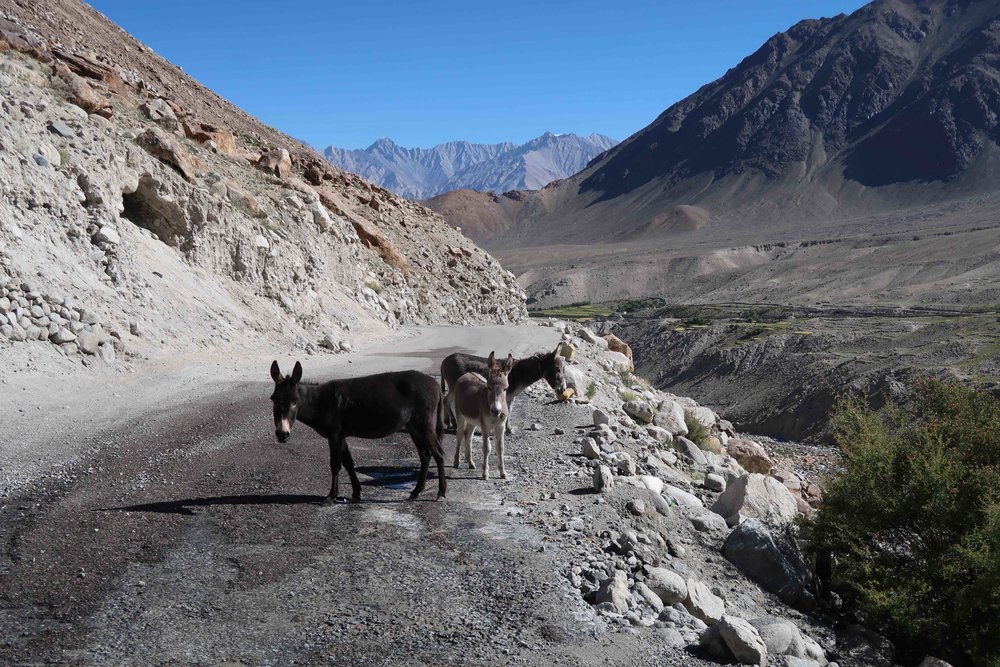
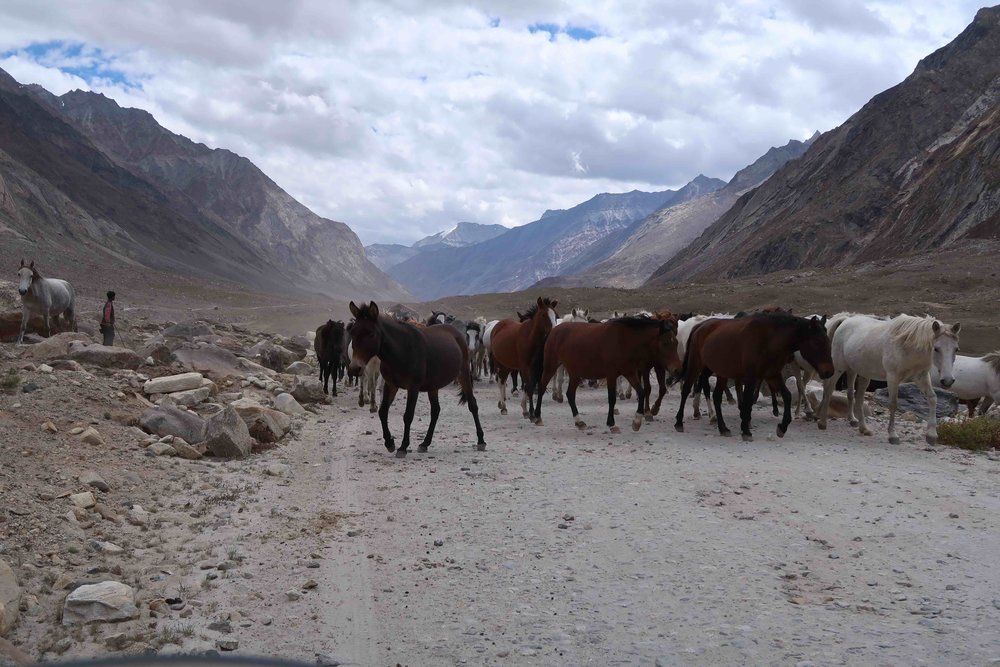
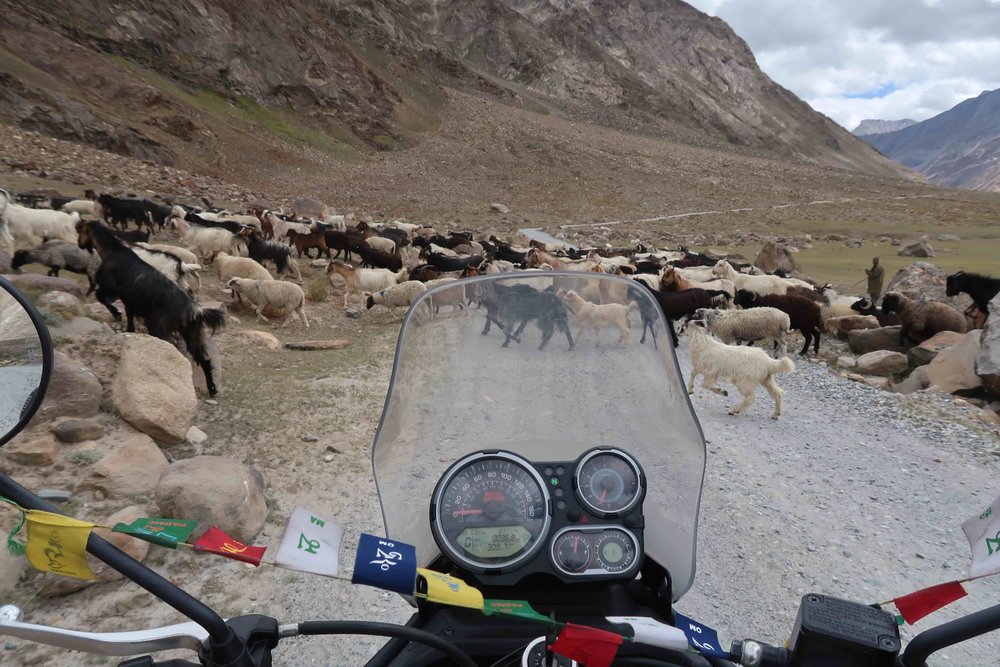
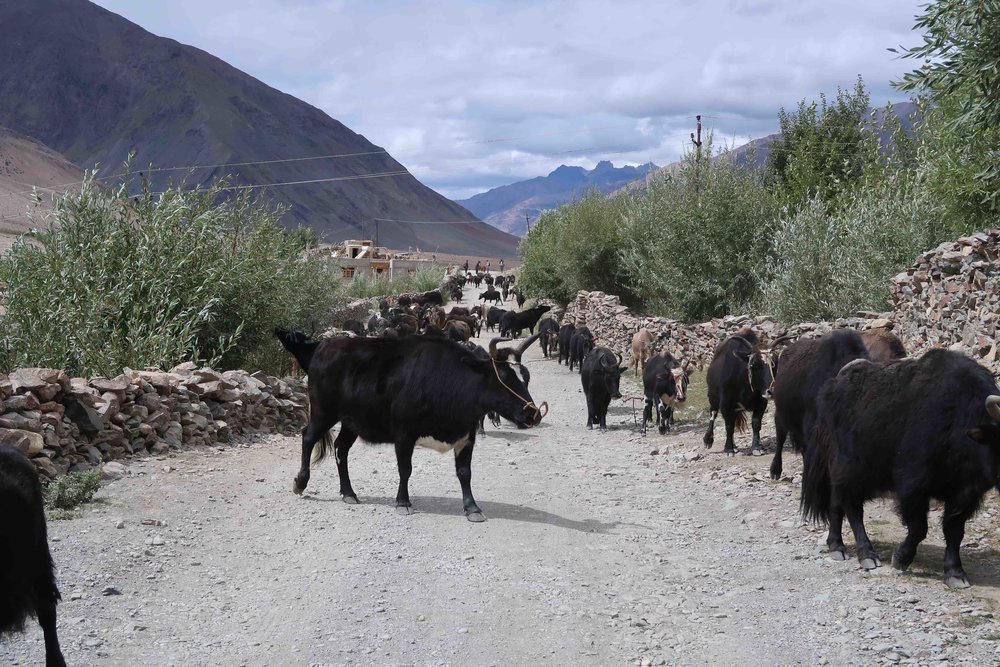
All in all, it was my first time traveling abroad on a motorbike, and I loved every minute of it. The freedom, the riding, but probably most of all the troubles I had to deal with led me to meet the most amazing people.
Hallo Noraly,
Having just seen your endeavors on Savannah in the Kalahari Desert Race I couldn’t refrain myself from chuckling when you wrote “but their 250cc motorbikes are hardly what you would call a motorbike”. Maybe those KTM’s aren’t that bad of a choice in India after all hey? Nice blog with great tips for future adventurers. And another set of great pictures.

Hi Norally,
Even though I've been following your videos on youtube, reading this blog for the first time. I've been through the same roads and was laughing on your comments about the river crossing and the fuel economy of the RE bullet. :-)
just getting into the website / blogs etc . Trying to start from the beginning as Ive seen a good many of your You Tube vids now already - awesome and truly inspirational, much respect for you. I see Im in good company as well - comment from Nick Zentner -passionate geology guru from Ellensburg USA also a producer of wonderful informative videos
Im hooked !!
All the best
Tony - Skye Biker
"I was called a hero...but what they didn't know was that I was absolutely shitting myself with every river crossing". I'm new to your blogs and thought I'd start at the beginning. Was grinning as I was reading...and then laughed out loud when I got to your quote above. So fun to see another side of you through your writing. Will be very fun to read about what I've been enjoying these past couple of years. Thank you! Nick Zentner in Ellensburg, Washington, USA.

Very useful article 👍

The rental rides on the REH were amazing Noraly. Did you have a name for that bike? The story about the travel with the mule men (think I remember that right) was a world class adventure. I would welcome any travels from you back packing travel days that you might write. Still lot of exploring of this site to do, did try the 360 but I could only get a slow download rate due to my provider. You're a very blessed young woman, and as always take care.


